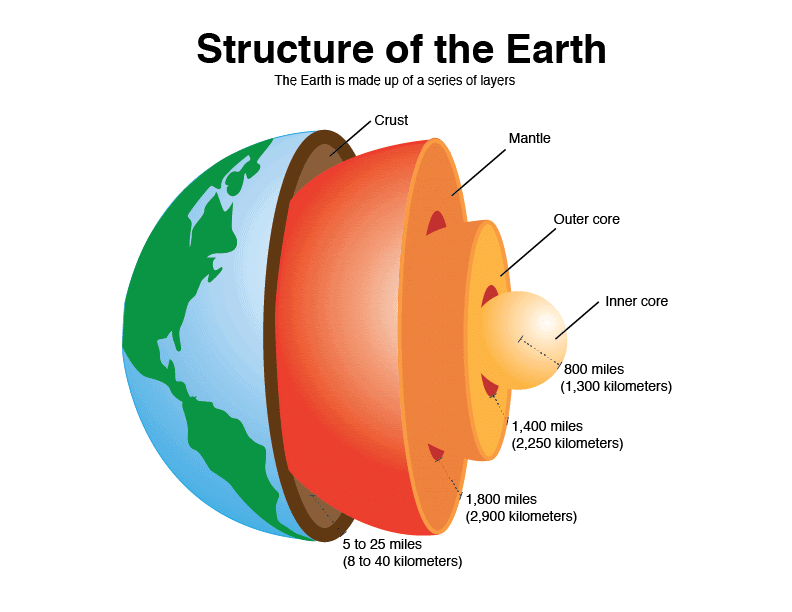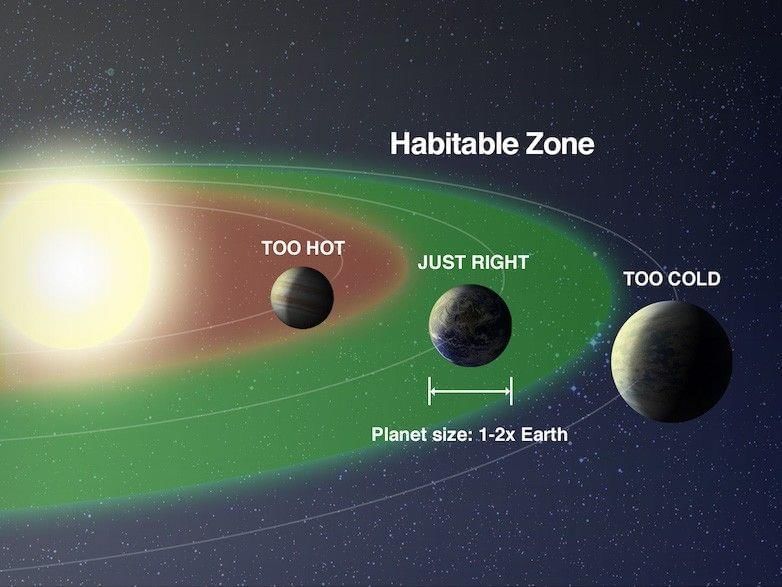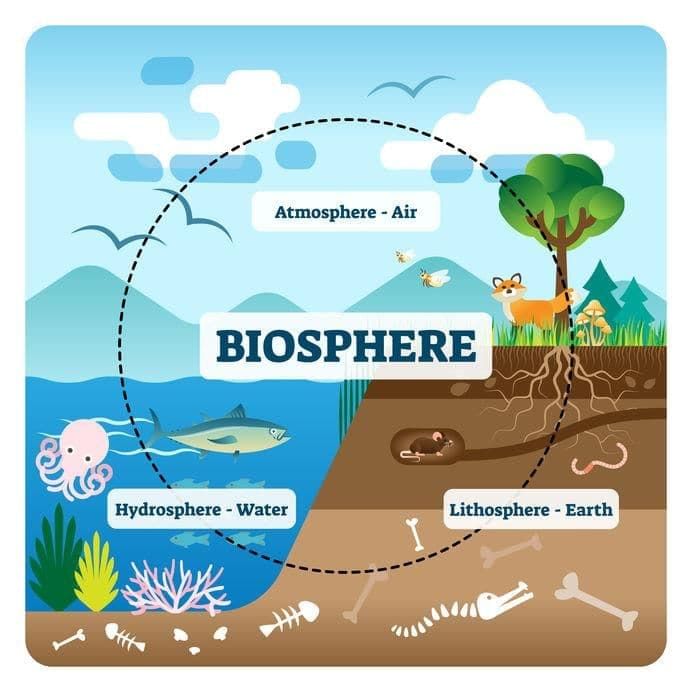Short and Long Answer Questions: Our Home: Earth, a Unique Life-Sustaining Planet | Science Curiosity Class 8 - New NCERT PDF Download
Short Answer Questions
Q1. Why is the Earth’s crust important for life despite being so thin?
The Earth’s crust provides air, water, soil, and minerals needed for life. It also gives us resources like timber, rocks, and metals to build and survive. Without the crust, no plants, animals, or humans could exist.

Q2. How do false colour satellite images help scientists?
False colour images use special colours to show details not visible to the naked eye. They help scientists study landforms, water bodies, plant growth, and environmental changes more clearly.
Q3. How does the greenhouse effect on Earth differ from that on Venus?
On Venus, the thick carbon dioxide atmosphere traps extreme heat, making it the hottest planet. On Earth, the greenhouse effect is milder, trapping just enough heat to keep temperatures suitable for life.
Q4. Why is the Earth’s position in the Solar System called the “Goldilocks Zone”?
Earth is at the right distance from the Sun—neither too hot nor too cold. This allows water to stay mostly in liquid form, which is essential for life.

Q5. What makes Earth’s size suitable for life?
Earth’s size creates enough gravity to hold its atmosphere without crushing living beings. If it were smaller, gases would escape; if it were much bigger, gravity could be too strong for life.
Q6. What was the purpose of India’s Mangalyaan mission?
Mangalyaan studied Mars’ atmosphere and surface. It searched for signs of past water and explored whether Mars could have supported life.
Q7. How does the Earth’s magnetic field protect life?
The magnetic field deflects harmful charged particles from space, such as solar wind and cosmic rays. This protects our atmosphere and living beings from radiation damage.
Q8. How do air, water, and sunlight work together to support life?
Plants use sunlight, water, and carbon dioxide to make food through photosynthesis. Animals breathe the oxygen plants release and drink water for survival. This cycle keeps life on Earth balanced.
Q9. Why is soil considered an active part of life on Earth?
Soil provides nutrients for plants, which feed most other living things. It is formed from rocks and dead organisms and plays a vital role in supporting ecosystems.
Q10. How are plants, animals, and microorganisms connected in the biosphere?
Plants produce food, animals depend on plants or other animals for energy, and decomposers recycle nutrients from dead organisms. This interconnected network keeps ecosystems balanced.

Q11. What human actions are causing biodiversity loss?
Cutting forests, draining wetlands, and destroying habitats reduce the number of plants and animals. This breaks food chains and weakens ecosystems.
Q12. How can local communities help protect the environment?
Local communities can manage resources like water, soil, and forests wisely. They can reduce waste, prevent pollution, and protect wildlife to keep ecosystems healthy.
Long Answer Questions
Q1. Explain how the thin crust of Earth supports life and why it is compared to the skin of an apple.
Ans:
- The Earth’s crust is the outermost and thinnest layer where all known life exists. Although it is very thin compared to the rest of the planet, it contains the soil, water, air, and minerals needed for plants, animals, and humans to survive.
- Just like the thin skin of an apple protects and covers the fruit, the crust supports and protects life. Beneath it are deeper layers like the mantle and core which do not support life. The crust provides essential resources such as timber, metals, and building materials. Without this layer, life as we know it could not exist.
Q2. Describe the difference between rocky planets and gas giants in our Solar System.
Ans:
- The Solar System’s planets are divided into two main types—rocky planets (Mercury, Venus, Earth, and Mars) and gas giants (Jupiter, Saturn, Uranus, and Neptune). Rocky planets are smaller, have solid surfaces, and are made mostly of rock and metal. Gas giants are much larger, made mostly of gases like hydrogen and helium, and do not have a solid surface.
- Rocky planets are closer to the Sun, while gas giants are farther away. Each type has unique characteristics that affect temperature, atmosphere, and the possibility of life. Studying these planets helps scientists understand Earth’s place in the Solar System.
Q3. Why is Earth’s orbit shape important for maintaining suitable living conditions?
Ans:
- Earth moves around the Sun in a nearly circular orbit, which keeps sunlight and temperatures relatively steady throughout the year. This prevents extreme temperature changes that could make survival difficult for most living things. If Earth’s orbit were more oval-shaped, some areas would become extremely hot while others would freeze.
- The steady climate created by this orbit allows plants to grow and animals to adapt naturally. Along with other factors, the orbit helps maintain the balance of seasons and supports the diversity of life. This stability is one reason Earth can sustain life while other planets cannot.
Q4. How does the magnetic field of Earth act as a shield for life?
Ans:
- Earth’s magnetic field is created by the movement of molten iron in its core. This invisible field surrounds the planet and deflects harmful charged particles from the Sun (solar wind) and from space (cosmic rays). Without this shield, these particles could strip away parts of the atmosphere and damage living cells.
- The magnetic field also helps protect the ozone layer, which blocks dangerous ultraviolet rays. This protection allows life to survive without being exposed to extreme radiation. In short, Earth’s magnetic field is one of the planet’s most important safety features.
Q5. Discuss how water in different forms supports life on Earth.
Ans:
- Water covers about 70% of Earth’s surface and exists in oceans, rivers, lakes, groundwater, ice, and water vapour in the air. Oceans and seas are home to countless marine species, while freshwater bodies provide drinking water and support farming. Water helps plants absorb nutrients and animals regulate body temperature.
- Water vapour forms clouds, leading to rain and snow that refill water sources. Even ice is important—it reflects sunlight and keeps Earth’s climate balanced. Without the continuous movement and recycling of water, life on Earth would not survive.
Q6. Explain the role of microorganisms in maintaining life on Earth.
Ans:
- Microorganisms like bacteria and fungi are small but play a big role in the Earth’s ecosystems. They act as decomposers, breaking down the remains of dead plants and animals into nutrients that enrich the soil.
- Some bacteria help in processes like nitrogen fixation, which makes nutrients available to plants. Microorganisms also form part of the food chain, supporting larger life forms. Without them, waste and dead matter would pile up, and nutrients would not be recycled. Their work ensures that ecosystems stay productive and balanced.
|
59 videos|236 docs|13 tests
|
FAQs on Short and Long Answer Questions: Our Home: Earth, a Unique Life-Sustaining Planet - Science Curiosity Class 8 - New NCERT
| 1. What makes Earth a unique life-sustaining planet compared to other planets in the solar system? |  |
| 2. How does the water cycle contribute to sustaining life on Earth? |  |
| 3. What are the key factors that influence climate and weather patterns on Earth? |  |
| 4. What role do ecosystems play in maintaining Earth's environmental balance? |  |
| 5. Why is it important to conserve Earth's natural resources, and what are some methods to achieve this? |  |
















